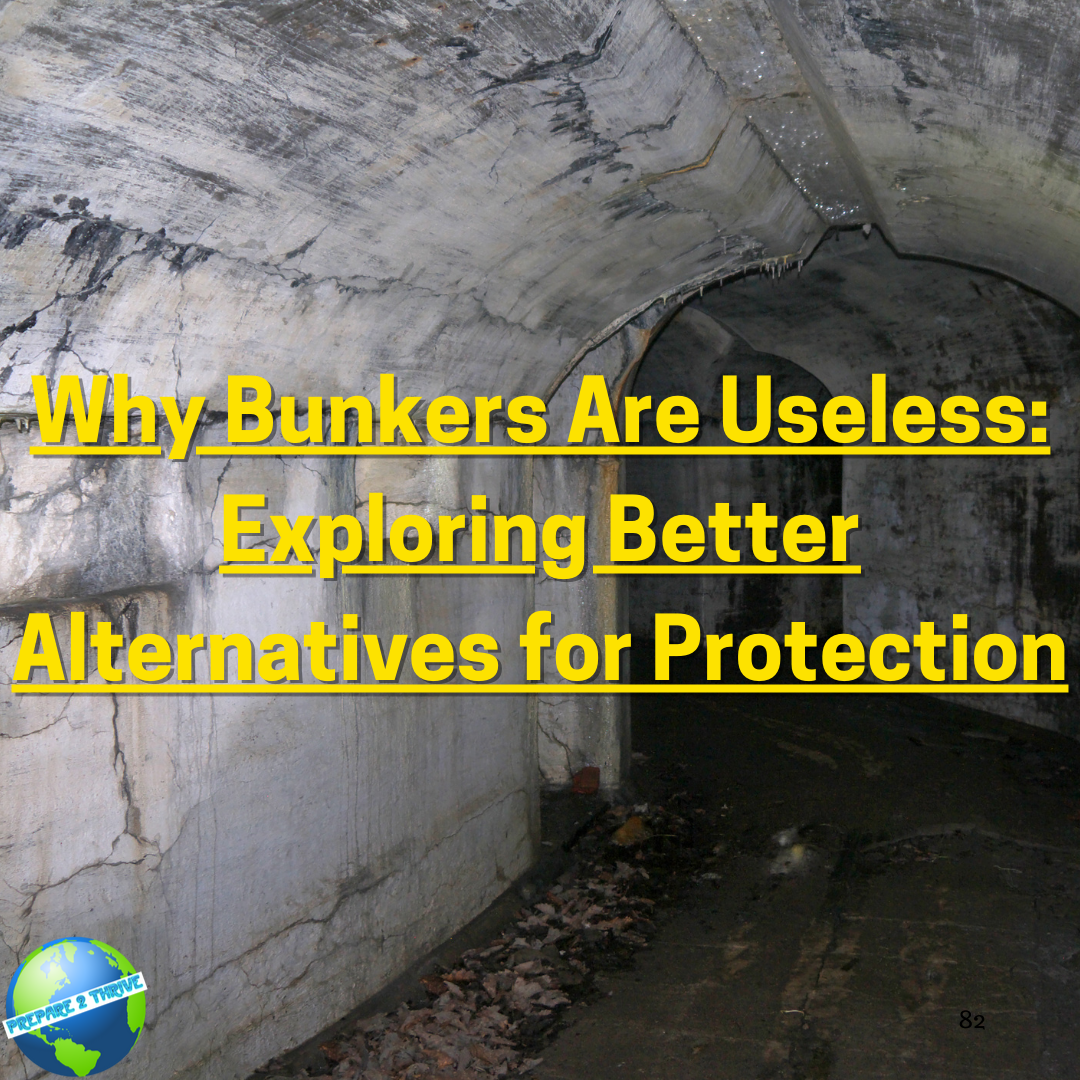Bunkers have been around for centuries, and their purpose is to provide a safe haven during emergencies. They are usually designed to withstand natural disasters, terrorist attacks, and even nuclear war. However, in recent times, there has been a growing concern about the usefulness of bunkers. In fact, many experts believe that bunkers are completely useless in most situations. In this article, we will examine why bunkers are useless and explore alternative options.
Firstly, it is important to note that bunkers are not indestructible. They may be able to withstand some disasters, but they are not invincible. For instance, during a nuclear war, a bunker may protect you from the initial blast, but it may not protect you from the radiation fallout. Additionally, a bunker is susceptible to structural damage over time, especially if it is not maintained properly.
Furthermore, bunkers are not a long-term solution. In the event of a prolonged disaster or emergency, supplies and resources will eventually run out. A bunker is not a sustainable living solution, and people will have to venture outside eventually to restock on necessities. This is especially true for those who are relying on their bunker to protect them during a global pandemic, where food and medical supplies may be limited.
Another reason why bunkers are useless is that they are stationary. While they may provide protection in one location, they cannot protect you if you need to move to another location. In today's world, where terrorism and natural disasters are prevalent, it is essential to be mobile. A bunker may not be able to provide this mobility, which is why it is not an ideal solution for those who are looking for a long-term solution.
Moreover, bunkers are expensive to build and maintain. The cost of building a bunker can run into millions of dollars, which is not a feasible solution for most people. Additionally, the cost of maintaining a bunker is also significant, as it requires regular upkeep and monitoring to ensure that it remains functional. This is not an option for people who are looking for a cost-effective solution.
In light of these challenges, there are alternatives that can provide the same level of protection as a bunker, without the disadvantages. One alternative is a catamaran sailboat. This option provides mobility, which is essential in today's world. In addition, it is a sustainable living solution, as it can provide you with a home and supplies for an extended period. A catamaran sailboat is also cost-effective, as it does not require the same level of maintenance as a bunker.
Another alternative is to invest in a self-sufficient community. These communities are designed to be self-sustaining, and they are often located in remote areas. They provide protection, resources, and supplies for their members, making them an excellent long-term solution. While they may require an initial investment, they are often more cost-effective than building and maintaining a bunker.
In conclusion, while bunkers may have been a viable option in the past, they are not the best solution for most people today. They are expensive, stationary, and not a sustainable living solution. Instead, alternatives such as a catamaran sailboat or a self-sufficient community provide a better solution for those who are looking for protection in today's world. By exploring these options, people can find a solution that is both effective and cost-effective, ensuring that they are prepared for any emergency or disaster that may come their way.
You can read more about bug-out sailboats here.
Hashtags: #Bunkers #Alternatives #Protection #Emergencies #CostEffective #Sustainable
Update 2023-11-12 09:27:03
Addendum: The Issue of Waste Disposal in Underground Bunkers
While the article has already highlighted various reasons why bunkers may not be the most effective solution for emergency preparedness, an important aspect that often goes overlooked is the challenge of waste disposal in underground shelters. Waste management is a critical consideration for any sustainable living solution, and underground bunkers present unique challenges in this regard.
-
 Limited Space for Waste Storage: Underground bunkers typically have limited space, and allocating sufficient room for waste storage becomes a logistical challenge. In an extended emergency scenario, waste can accumulate rapidly, leading to hygiene issues and potentially compromising the safety and health of the occupants.
Limited Space for Waste Storage: Underground bunkers typically have limited space, and allocating sufficient room for waste storage becomes a logistical challenge. In an extended emergency scenario, waste can accumulate rapidly, leading to hygiene issues and potentially compromising the safety and health of the occupants. -
Environmental Impact: Disposing of waste generated within a bunker poses environmental concerns. Traditional waste disposal methods may not be feasible in an enclosed underground environment. Improper waste disposal could result in contamination of the surrounding soil or water sources, presenting risks to both the inhabitants of the bunker and the broader ecosystem.
-
Ventilation and Air Quality: Adequate ventilation is crucial for maintaining air quality within bunkers, and waste contributes significantly to air pollution. The confined space of an underground shelter makes managing odours and preventing the buildup of harmful gases challenging. Proper ventilation systems would be necessary, adding complexity and cost to bunker design and maintenance.
-
Long-term Health Risks: Prolonged exposure to waste within a confined space can pose serious health risks. Bunkers are often sealed environments, and improper waste disposal can lead to the proliferation of bacteria, viruses, and other pathogens. This further underscores the importance of having robust waste management systems in place.
-
Resource Depletion: Waste management systems in bunkers would require resources such as energy and water, which may already be limited in an emergency situation. Balancing the need for waste disposal with the conservation of essential resources becomes a critical consideration in the design and operation of underground shelters.
Considering the waste disposal challenges associated with bunkers, alternative solutions that incorporate sustainable waste management practices should be explored. Options like self-sufficient communities, as mentioned in the article, often integrate eco-friendly waste disposal methods and emphasize environmental sustainability as part of their design. As individuals and communities evaluate their emergency preparedness strategies, factoring in waste disposal considerations becomes essential for creating truly resilient and sustainable solutions.



